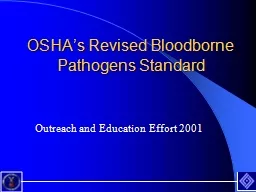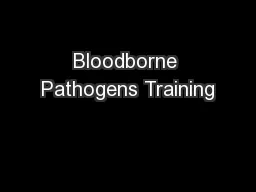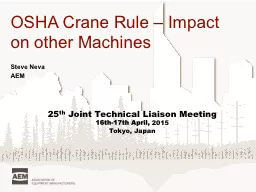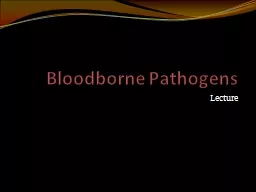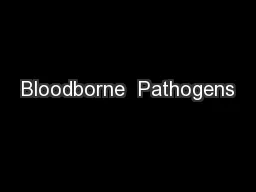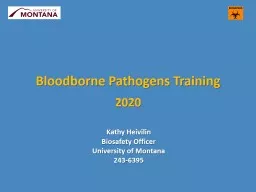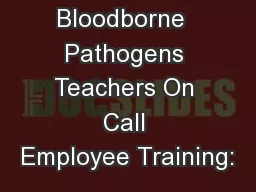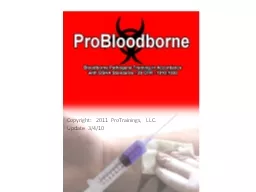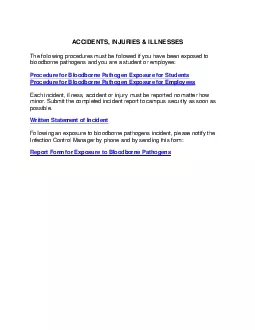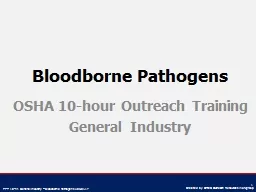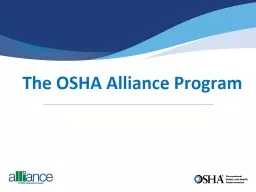PPT-OSHA’s Revised Bloodborne Pathogens Standard
Author : celsa-spraggs | Published Date : 2018-11-01
Outreach and Education Effort 2001 Bloodborne Pathogens Standard 29 CFR 19101030 Occupational Exposure to Bloodborne Pathogens Published December 1991 Effective
Presentation Embed Code
Download Presentation
Download Presentation The PPT/PDF document "OSHA’s Revised Bloodborne Pathogens St..." is the property of its rightful owner. Permission is granted to download and print the materials on this website for personal, non-commercial use only, and to display it on your personal computer provided you do not modify the materials and that you retain all copyright notices contained in the materials. By downloading content from our website, you accept the terms of this agreement.
OSHA’s Revised Bloodborne Pathogens Standard: Transcript
Download Rules Of Document
"OSHA’s Revised Bloodborne Pathogens Standard"The content belongs to its owner. You may download and print it for personal use, without modification, and keep all copyright notices. By downloading, you agree to these terms.
Related Documents

